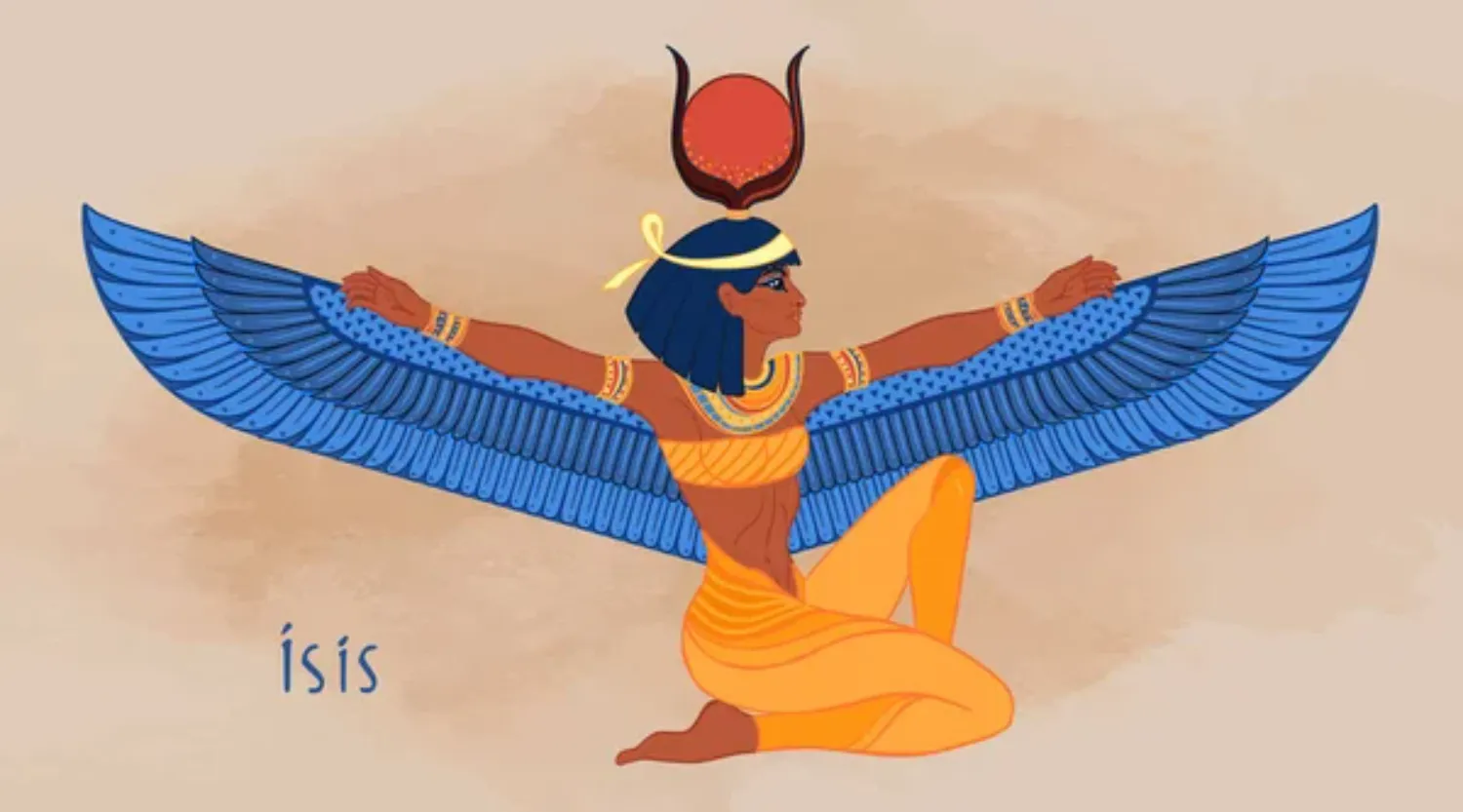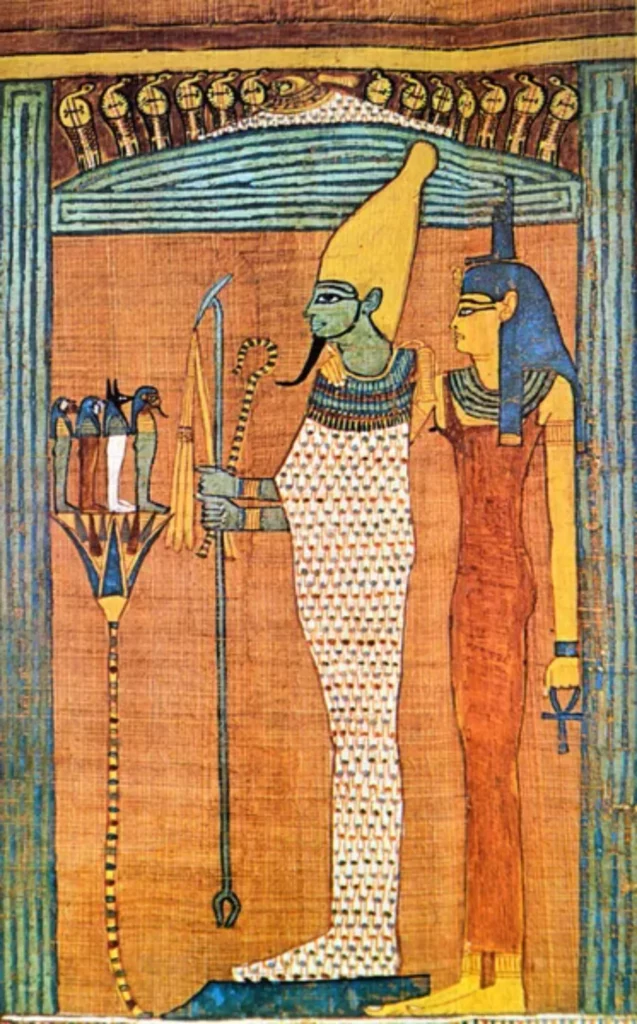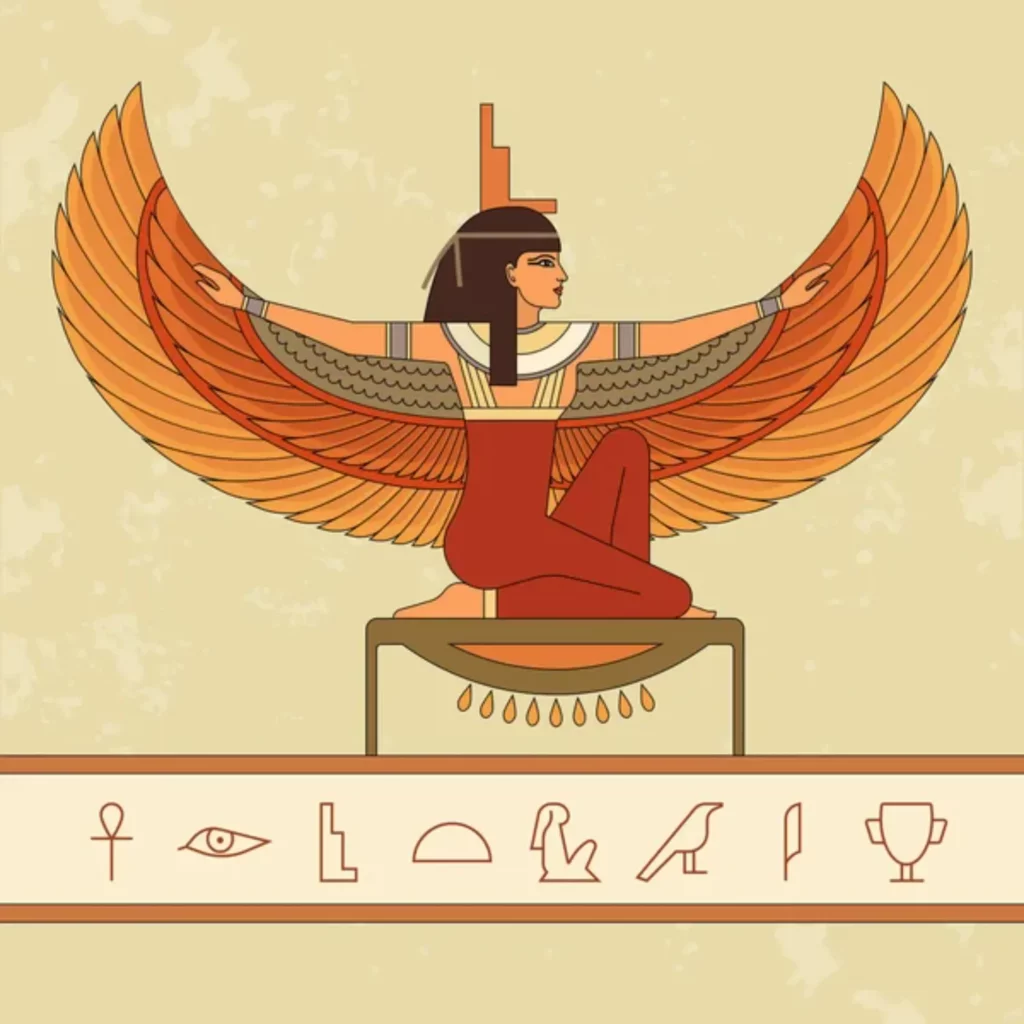Goddess Isis: Her Family, Her Roots and Her Names

Updated On: November 08, 2023 by Ciaran Connolly
The mother of all gods was considered one of the most significant deities in ancient Egyptian religion. Goddess Isis was revered in ancient cultures all over the world. Goddess Isis, also known as Egyptian Aset or Eset, was a goddess who held a prominent position in ancient Egyptian religion. Her given name is a transliteration into Greek of an old Egyptian word that meant “throne.” Let us delve deeper into Goddess Isis, beginning with her family roots, shall we?
Geb
Geb, also known as the God of the Earth, was considered one of the most significant gods in ancient Egyptian religion. He descended from an essential line of gods and was the son of Shu, the God of air, and Tefnut, the Goddess of moisture. He was also said to have been the son of a famous god. Osiris, Goddess Isis, Seth, and Nephthys were the four children that Geb and Nut were blessed with. In contrast, the name Geb appears in various other ancient texts with multiple names, including Seb, Keb, and Gebb.
Following the death of Atum, the four gods, Shu, Tefnut, Geb, and Nut, took up permanent residence in the cosmos. On the other hand, the gods’ second group, which included Osiris, Goddess Isis, Seth, and Nephthys, served as mediators between humans and the cosmos. The ancient Egyptians believed earthquakes were a manifestation of the God Geb laughing at them. The symbolic meaning of Geb is the God of the Ground.

Although most commonly depicted as a human wearing a combination of the atef and the white crown, the God Geb was also sometimes shown as a goose, considered a sacred animal. Geb is depicted as taking the form of a human being and is shown to be the personification of the earth. He is shown to be green in colour and has vegetation growing from his body. In his role as the planet, he is frequently depicted lying on his side with one knee bent upwards toward the heavens.
Origin Of Geb
Heliopolis is believed to be the birthplace of the gods worshipped in Egypt. One of these gods is Geb, the Earth’s God. It is said that the creation process first got underway here. Numerous papyri point in this direction, and some even demonstrate that after the Sun-God appeared in the sky, he ascended into the heavens and cast his rays down to the earth. These papyruses even depict Geb in a prominent position, where he is shown lying on the ground with one hand stretched out and the other pointing towards heaven. This is one of the earliest depictions of Geb that is known to exist.
During the time of the Ptolemies, Geb was given the name Kronos, a god revered in Greek mythology. It is believed that worship of the God Geb began in Luna during the pre-dynastic era. Edfu and Dendera were referred to as “the Aat of Geb,” but Dendera was also famous as “the home of the children of Geb.”
It is said that in his shrine at Bata, he laid the incredible egg from which the sun god arose in the form of a phoenix or Benben. Benben was the name of this mythical creature. Because of the sound made when the egg was being laid, Geb had given the nickname “the great cackler.”
Functions of Geb and Isis
It is said that earthquakes were the result of Geb laughing. Because he was responsible for supplying the precious stones and minerals that could be found in caves and mines, he became known as the God of those locations. As a harvest god, he was sometimes thought of as Renenutet, the Goddess of the cobra and her spouse. The Goddess of fertility in ancient Egypt was associated with magic, death, healing, and rebirth under the name Isis.
Also, Isis was worshipped as the rebirth goddess. Isis was Geb’s first daughter; the earth’s God, and Nut, the Goddess of the sky. Goddess Isis began as a relatively unimportant goddess with no temples dedicated to her. However, as the dynastic age progressed, her significance increased. She eventually became one of the most significant deities in ancient Egypt. After that, her religion was disseminated throughout the Roman Empire, and people worshipped Isis everywhere, from England to Afghanistan. Paganism maintains its veneration of her even in modern times.
In her role as a mourner, she was an important deity in rituals connected with the dead. As a magical healer, Goddess Isis cured the sick and brought the dead back to life. In her role as a mother, she served as an example for all mothers everywhere.
The King Position
She was typically depicted as a stunning woman wearing a sheath dress and either a solar disc with cow’s horns or the hieroglyphic sign for the throne on her head. She was sometimes depicted as a scorpion, a bird, a sow, or a cow.
Before the 5th dynasty (2465–2325 BCE), there were no references to Isis. However, she is mentioned numerous times in the Pyramid Texts (around 2350–around 2100 BCE), where she offers assistance to the dead King. Goddess Isis was eventually able to offer her assistance to all of Egypt’s deceased because beliefs about the Afterlife became more inclusive over time.
Other Names of Isis

Isis was also known by the names Auset, Aset, and Eset in Egypt. These are all words frequently associated with the word for “throne,” which was also one of her names. After her husband Osiris passed away, Isis assumed his role as the God of the dead and took charge of the rituals associated with funerals that he had previously presided over.
Conclusion
Goddess Isis was both Osiris’ sister and his wife, but in ancient Egypt, incest was considered a normal part of the lives of the Egyptian gods because it was believed that it helped to preserve the gods’ sacred bloodlines. Isis was also revered as the mother of the Pharaohs and was seen as their guardian. Well! Now that you know about the goddess’s family, roots and names, it’s time to learn more about Ancient Gods.






